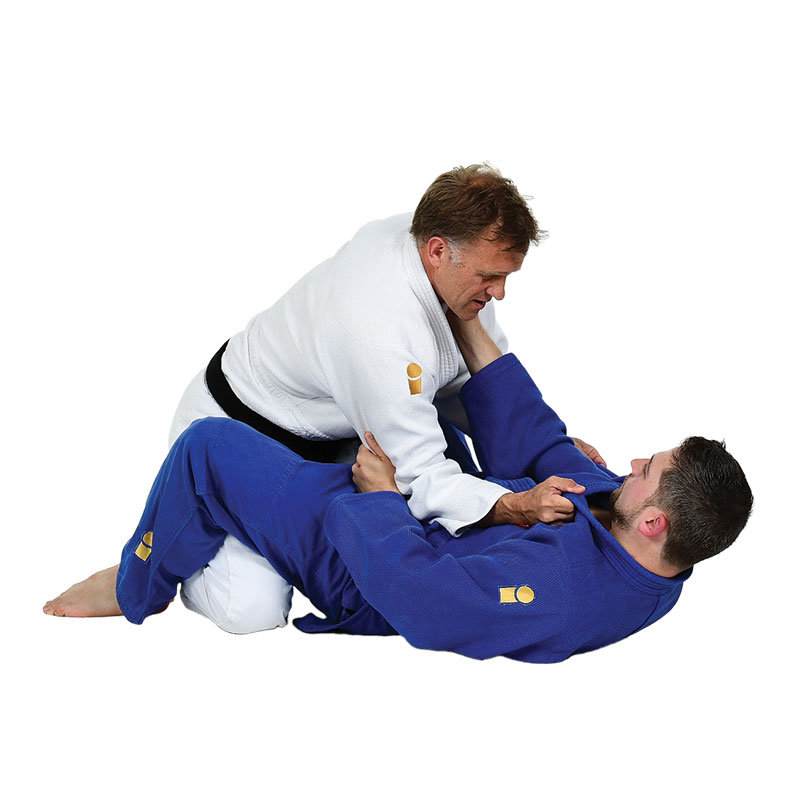Uke aomuke (受仰向け) – Supine Position with Tori in Guard
Uke aomuke literally translates to “uke lying face-up.” In this scenario, uke is positioned on their back, while tori is positioned between uke’s legs, typically in what is known as the guard position in modern grappling terminology.
Position Overview
In this position:
-
Uke lies flat on the tatami, face-up (aomuke)
-
Tori is kneeling or standing inside uke’s legs, attempting to advance or pass uke’s guard
-
Uke’s legs and hips form the primary line of defense, aiming to control posture and prevent passing
-
Uke uses grips on tori’s sleeves, collar, or belt to destabilise or control movement
Tactical Context
For uke:
-
The objective is to block tori’s attempt to pass the legs, using the knees, feet, and grips
-
Uke may seek submissions, such as chokes or armlocks, or transition to a reversal (sweep)
For tori:
-
The aim is to break uke’s guard, establish dominant top position (such as yoko-shiho-gatame or mount), or force a submission
-
Tori uses techniques like pressure passing, angle changes, and grip control to advance
Fundamental Principle
This situation exemplifies the struggle for positional dominance in ne-waza. Uke, while on the bottom, has powerful defensive and offensive options, while tori must remain balanced, composed, and efficient to control or submit uke.
